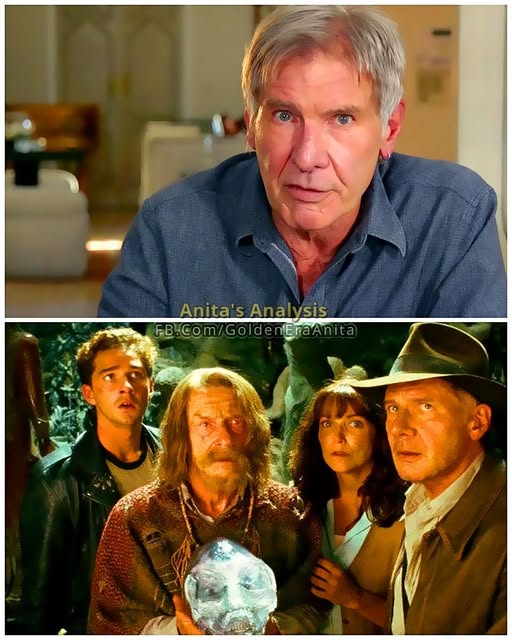
Harrison Ford strapped on the fedora again in 2008, but this time he did so with a curious twist: during the filming of “Indiana Jones and the Kingdom of the Crystal Skull,” he performed many of his own stunts at age 65. Crew members recalled their surprise watching Ford climb onto moving vehicles, crash through glass, and sprint across uneven terrain with the same vigor he had decades earlier. For a franchise built on physical adventure, seeing its leading man embrace the danger so late in his career became one of the film’s most remarkable behind-the-scenes stories.
The movie, released in May 2008, was the fourth installment in the legendary series directed by Steven Spielberg. Set in 1957, it placed Indiana Jones against Soviet adversaries led by Irina Spalko, played by Cate Blanchett. The Cold War setting was chosen deliberately, reflecting both the historical moment and the passing of time since the last adventure in “Indiana Jones and the Last Crusade” (1989). Shifting from Nazis to Soviets allowed the story to align with the era’s geopolitical climate, while also signaling that Jones’s adventures had entered a new age.
The idea of incorporating extraterrestrial elements became one of the most debated choices. George Lucas championed the concept, believing the 1950s backdrop naturally tied into the sci-fi obsessions of that decade. Spielberg initially resisted the alien theme, preferring the mystical religious artifacts that defined earlier films, yet Lucas convinced him that the crystal skulls could merge archaeology with science fiction. This decision divided fans but also gave the film its distinct identity.
Shia LaBeouf joined the cast as Mutt Williams, a motorcycle-riding greaser who turned out to be Indiana Jones’s son with Marion Ravenwood, reprised by Karen Allen. Their reunion added emotional depth, with audiences seeing Jones not only as a legendary adventurer but also as a father grappling with family responsibilities. Offscreen, LaBeouf described working alongside Ford as intimidating, but Ford reportedly encouraged him to embrace the character’s rebellious energy.
One of the most thrilling sequences, the jungle chase involving sword fights between vehicles, required months of coordination. Blanchett trained extensively in fencing to convincingly duel LaBeouf on speeding jeeps. Spielberg wanted the sequence to feel old-fashioned and practical, so much of it was shot with real vehicles crashing through the Hawaiian jungle, combined later with CGI enhancements for hazards like the infamous swarms of giant ants.
Ford’s costume, especially the fedora, underwent careful updates. Designers slightly adjusted its shape to account for his older face, ensuring it still carried the same iconic silhouette. His whip, another trademark, was used sparingly because Ford had less interest in mastering the lengthy cracking routines, though he insisted on keeping the weapon visible to preserve the character’s authenticity.
Filming spanned multiple locations, from New Mexico deserts doubling as Nevada test sites to soundstages packed with ancient temple sets. The production also recreated the nuclear test town sequence, where Indiana Jones hides inside a lead-lined refrigerator to survive an atomic blast. That moment quickly became infamous, sparking the term “nuking the fridge,” a phrase now used to describe any story that stretches credibility too far. Spielberg defended the scene, noting it was scientifically reviewed and theoretically survivable, though even Ford later admitted its absurdity made it memorable.
Marketing leaned heavily on secrecy. Spielberg and Lucas wanted to preserve the thrill of discovery, so trailers revealed little about the actual plot. The secrecy extended to the cast as well; scripts were printed on red paper to prevent photocopying, and actors were monitored to avoid leaks. When the film finally premiered at Cannes, anticipation reached extraordinary levels, and the cast was met with a mix of ovations and sharp criticism.
Though reactions to the movie varied, the sheer scale of its production, the return of beloved characters, and Ford’s unwavering commitment made it an undeniable cultural event of 2008. For all its controversies, it reaffirmed the enduring magnetism of Indiana Jones, showing that adventure could still find new directions even after decades of storytelling.
The film’s most unforgettable truth remains that at an age when most actors would avoid physically punishing roles, Harrison Ford charged forward, proving that Indiana Jones was never defined by time, only spirit.
